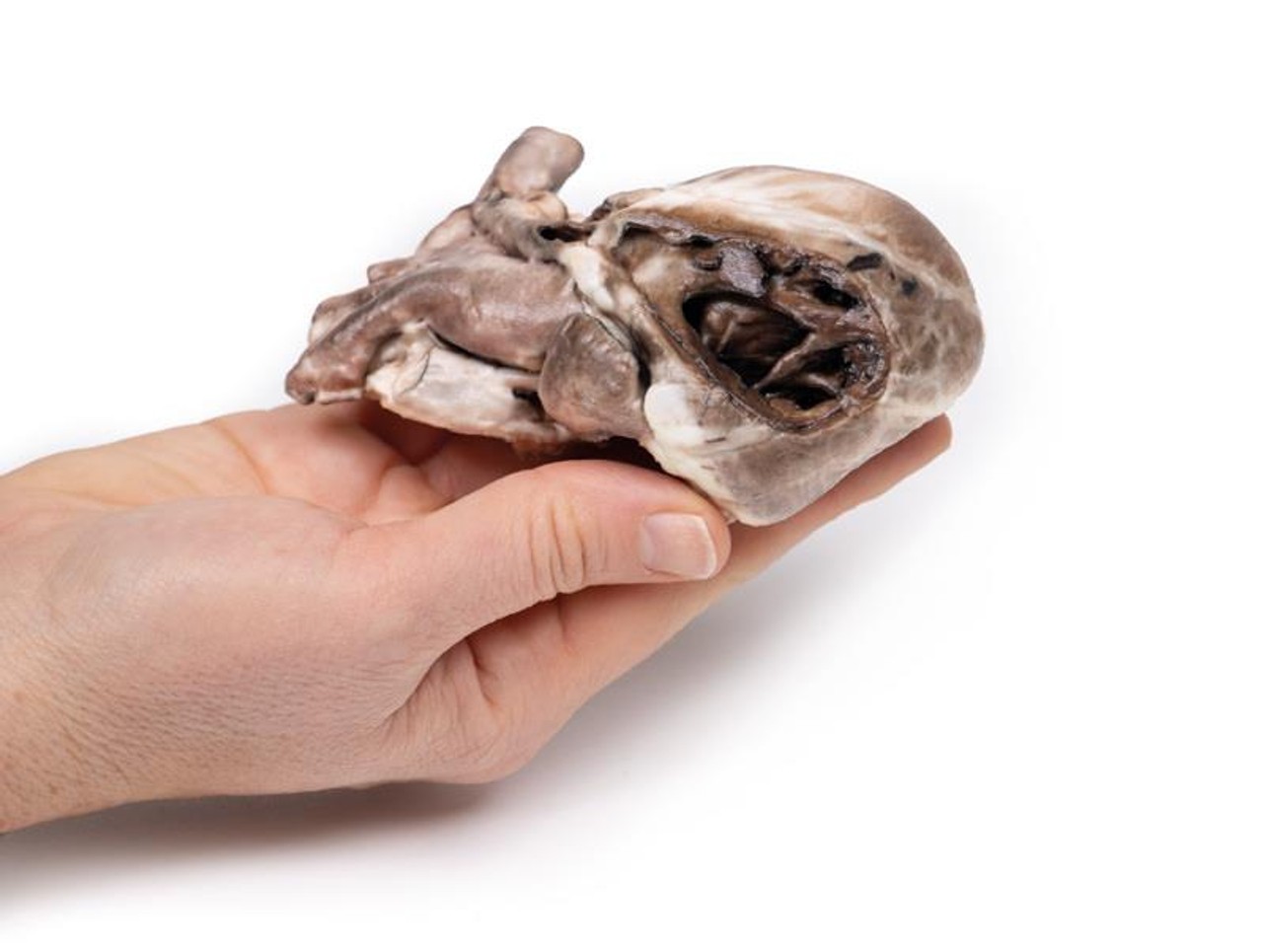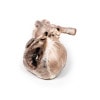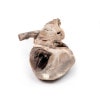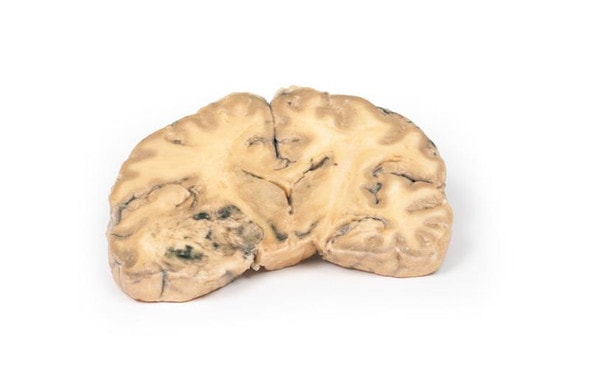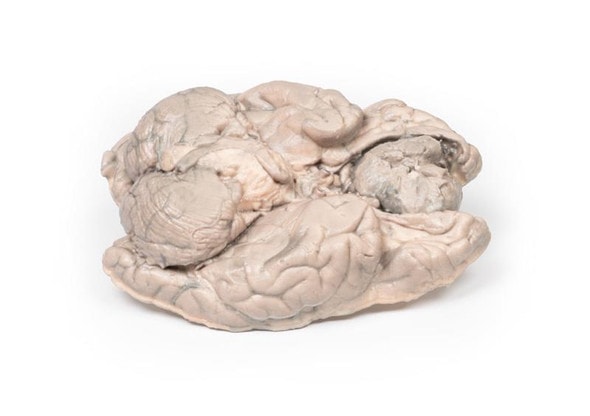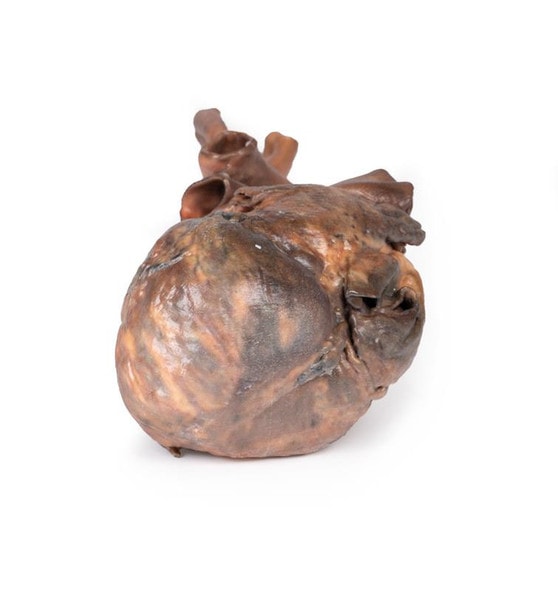Description
Developed from real patient case study specimens, the 3D printed anatomy model pathology series introduces an unmatched level of realism in human anatomy models. Each 3D printed anatomy model is a high-fidelity replica of a human cadaveric specimen, focusing on the key morbidity presentations that led to the deceasement of the patient. With advances in 3D printing materials and techniques, these stories can come to life in an ethical, consistently reproduceable, and easy to handle format. Ideal for the most advanced anatomical and pathological study, and backed by authentic case study details, students, instructors, and experts alike will discover a new level of anatomical study with the 3D printed anatomy model pathology series.
Clinical History
A 21-month old boy was admitted with a history of exhaustion and exertional dyspnoea for the previous 2 to 3 months. During this time there had been several attacks of acute dyspnoea each lasting up to two minutes. Examination revealed central cyanosis, mild finger clubbing, and a harsh systolic bruit maximal at the left sternal edge. Cardiac catheterization led to a diagnosis of Fallot's tetralogy and severe pulmonary oedema. A surgical correction was performed (Willis-Potts anastomosis between the aorta and the origin of the left pulmonary artery). The child developed acute dyspnoea and left lobar consolidation 12 hours post-operatively and died despite treatment.
Pathology
The child's heart is viewed from the anterior aspect. The anterior wall of the right ventricle has been excised to reveal prominent right ventricular hypertrophy and a narrowed pulmonary outflow tract. The pulmonary valve ring is also small, with a bicuspid stenosed valve. There is a patch of endocardial fibrosis in the outflow tract below the pulmonary valve. The origin of the aorta overlies a high ventricular septal defect. A probe could be passes into the aorta from the hypertrophied right ventricle. The further probe was able to be passed from the narrowed pulmonary trunk into a dilated, thin-walled left pulmonary artery and through the surgical anastomosis into the descending aorta. Examination of the posterior aspect of the specimen reveals an opened right atrium and left ventricle. When viewed from the right side of the heart, there is a large atrial septal defect (ASD), 8 mm in diameter at the site of the foramen ovale (large arrow). Another tiny ASD (small arrow) 3 mm in diameter is present posterior to the upper border of the large ASD. Note that the wall of the left ventricle is slightly thinner than the wall of the right ventricle.
Further Information
The four features of tetralogy of Fallot are: 1. Ventricular septal defect (VSD); 2. An aorta that straddles the VSD with the latter communicating with both ventricles (over-riding aorta) instead of just the left ventricle; 3. Pulmonary stenosis or obstruction of the right ventricular overflow tract; 4. Right ventricular hypertrophy. This condition usually causes cyanosis early in life. Its severity depends on the degree of pulmonary outflow obstruction, which determines whether there is a left-to-right, or right-to-left shunt. In some patients, pulmonary blood flow is increased due to the presence of a patent ductus arteriosus. Patients with this condition may survive untreated into adult life, and a few may reach middle age. However, surgical correction is now possible and is desirable, as the disorder is ultimately fatal. Sometimes additional cardiac abnormalities may be present. (e.g. atrial septal defect, as was found in this case).
In most cases of tetralogy of Fallot, the cause is not known although in some patients, genetic factors play a role. For example, the condition is more common in patients with Down syndrome (Trisomy 21; in association with AV canal defects) or DiGeorge syndrome (22q11 deletion).
Advantages of 3D Printed Anatomical Models
- 3D printed anatomical models are the most anatomically accurate examples of human anatomy because they are based on real human specimens.
- Avoid the ethical complications and complex handling, storage, and documentation requirements with 3D printed models when compared to human cadaveric specimens.
- 3D printed anatomy models are far less expensive than real human cadaveric specimens.
- Reproducibility and consistency allow for standardization of education and faster availability of models when you need them.
- Customization options are available for specific applications or educational needs. Enlargement, highlighting of specific anatomical structures, cutaway views, and more are just some of the customizations available.
Disadvantages of Human Cadavers
- Access to cadavers can be problematic and ethical complications are hard to avoid. Many countries cannot access cadavers for cultural and religious reasons.
- Human cadavers are costly to procure and require expensive storage facilities and dedicated staff to maintain them. Maintenance of the facility alone is costly.
- The cost to develop a cadaver lab or plastination technique is extremely high. Those funds could purchase hundreds of easy to handle, realistic 3D printed anatomical replicas.
- Wet specimens cannot be used in uncertified labs. Certification is expensive and time-consuming.
- Exposure to preservation fluids and chemicals is known to cause long-term health problems for lab workers and students. 3D printed anatomical replicas are safe to handle without any special equipment.
- Lack of reuse and reproducibility. If a dissection mistake is made, a new specimen has to be used and students have to start all over again.
Disadvantages of Plastinated Specimens
- Like real human cadaveric specimens, plastinated models are extremely expensive.
- Plastinated specimens still require real human samples and pose the same ethical issues as real human cadavers.
- The plastination process is extensive and takes months or longer to complete. 3D printed human anatomical models are available in a fraction of the time.
- Plastinated models, like human cadavers, are one of a kind and can only showcase one presentation of human anatomy.
Advanced 3D Printing Techniques for Superior Results
- Vibrant color offering with 10 million colors
- UV-curable inkjet printing
- High quality 3D printing that can create products that are delicate, extremely precise, and incredibly realistic
- To improve durability of fragile, thin, and delicate arteries, veins or vessels, a clear support material is printed in key areas. This makes the models robust so they can be handled by students easily.



